6 Causes Of Sewage Pollution In The Ocean
Our planet’s oceans receive many pollutants that compromise the purity of their waters and the health of the plants and animals that thrive in them.
Although several national and international regulations are put in place to mitigate this issue, most companies, industrial establishments and local governments in developed and developing countries take wastewater contamination, especially sewage pollution, quite lightly.
Wastewater and Sewage- what’s the difference?
Wastewater consists of water from toilets, kitchens, laundry rooms, commercial establishments, industries, agricultural activities etc., and contains an array of contaminants.
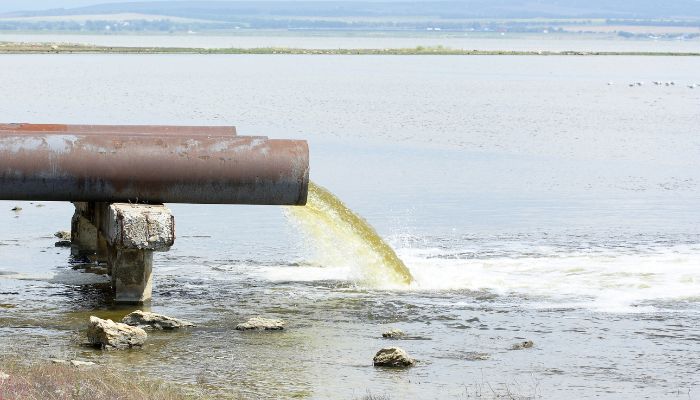
Sewage is that part of wastewater primarily contaminated with faeces and urine. It is an amalgamation of nutrients, organic matter, several viruses and bacteria, parasites, pathogens, solids, plastics, microfibres, chemicals like PCBs, pesticides, phenols, oil and grease, slaughterhouse wastes, sediments, metals etc., which harm the ocean ecosystems if released into the waters without proper treatment.
Sewage Pollution- A pernicious threat to our oceans
Sewage pollution is a serious threat to our oceans and coastal environments as it contains many kinds of pollutants, the ways it pollutes the freshwater, its impact and the neglect of the issue of sewage pollution by many stakeholders as new issues like plastic pollution seem to be of more concern.
Though plastic pollution is also harmful, one must not forget that sewage is one of the largest contributors to marine pollution. Over 80% of global sewage is dumped into the seas without adequate treatment.
Causes of Sewage Pollution in the Oceans
There are several pathways and reasons why sewage ends up in the oceans. A significant chunk of the issue lies in technological and infrastructural investments made by most governments in laying a well-planned drainage system in their cities and towns. Other challenges include the taboos which inhibit discussion and proactive action in many communities. Mentioned below are some of the causes of sewage pollution.
1. Inadequate and Obsolete Infrastructure
Most sewage drains and pipeline networks were built quite early, in the 1800s and the 1900s, when the population was low, and storms were not that frequent. Hence, most drainage networks in the world are old and obsolete.
They were also not properly laid out, as little was known about the effects of sewage pollution at that time. This can be gauged from the fact that most regulatory laws and regulations to tackle sewage pollution came up in the late 1970s and 80s. In those days, people thought seas and oceans could dilute sewage and other waste. Hence many rivers, such as the Thames, became dumping grounds.
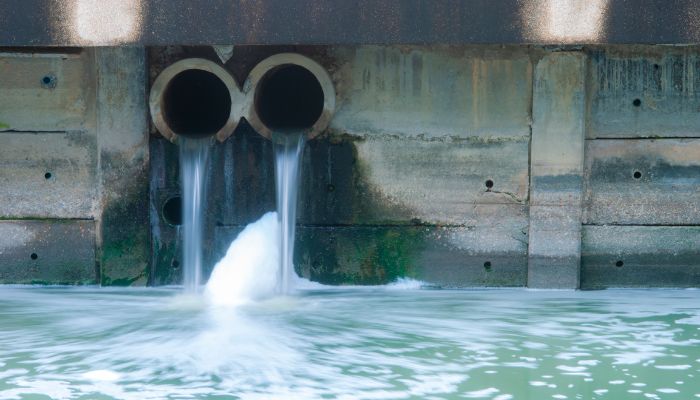
Even today, there are many areas in the world where untreated raw sewage is dumped into oceans and rivers every day. This has degraded the water quality and poses severe threats to human health.
Coastal environments are being polluted too. For instance, some booklets and pamphlets provide information about the most polluted beaches in the world. Also, a list of British Blue Flag beaches shows the beaches whose waters are clean enough for swimming.
2. Cruise Ships dump considerable sewage into the oceans.
Cruise ships can discharge wastewater into oceans and seas; however, after proper treatment, per the laws of the Environmental Protection Agency. Ships must abide by specific regulations related to distance from the coast, treatment type, volume of waste that can be discharged, etc.
No waste can be dumped in non-discharge zones, but some ships flout these regulations. Although most countries like the US have strict rules to prevent sewage discharge, other coastal areas lack proper laws and enforcement mechanisms.
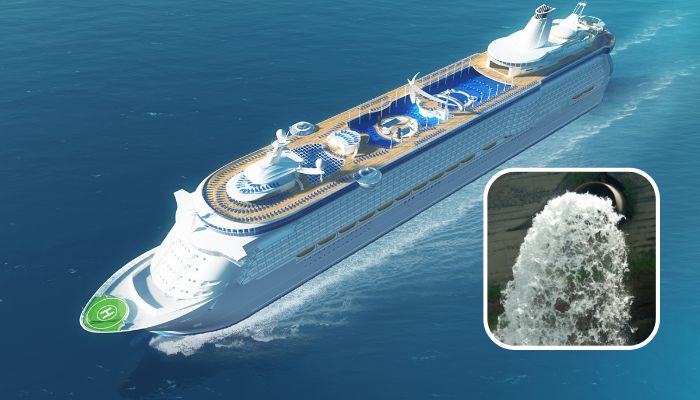
Earlier the size of the cruise industry was small; however, it is one of the fastest-growing sectors today. According to a non-governmental environment group called Friends of the Earth, about 20 million people board cruise ships yearly, generating roughly 3 billion gallons of sewage from sinks, galleys and showers.
This gross figure is calculated from the EPA’s estimates which mention that a 3000-passenger cruise vessel generates approximately 150,000 gallons of sewage, enough to fill ten swimming pools.
There are many new ships which dispose of waste properly. For instance, the 2020 Carnival Cruise’s Sustainability report mentioned that its ships have food waste biodigesters, dehydrators, and crushers which tackle leftover food and biodegradable waste. Solid wastes like garbage and other harmless materials are dumped into landfills or incinerated onboard.
3. Flooding and Improper Treatment At the Sewage Treatment Plants
Sewage pollution is also caused due to lack of proper sanitation and sewage treatment facilities. In some places, such treatment plants exist but cannot handle large amounts of sewage as they might not function properly due to a lack of repair and regular maintenance.
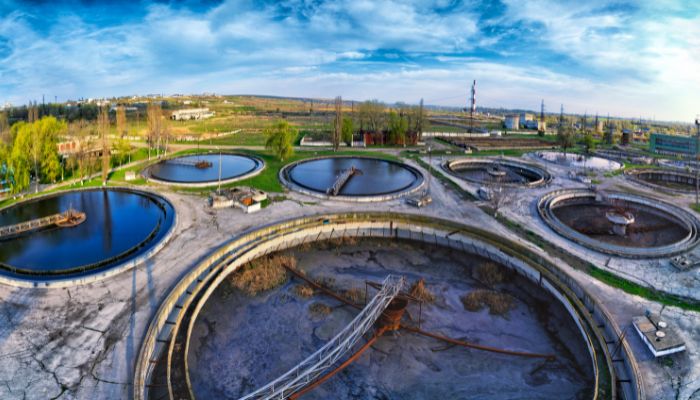
Sometimes there could be malfunctions, and during the rainy season, there could be flooding leading to the generation of more wastewater than usual, beyond the capacity of sewage treatment plants. In these situations, there is no alternative to releasing this water into streams, bays, and rivers, which flow into seas and oceans. Also, sewage is absorbed by the soil when pumped into the ground, which does not filter the pollutants completely; however, it also depends on the terrain.
4. Lack of sanitation facilities
Most of the world’s population, especially those in poor-income countries, do not have access to proper sanitary facilities like toilets and clean drinking water. Per the WHO data, about 6 out of 10 people did not have safe access to sanitation facilities in 2017. Hence more than 4 billion people use only limited and compromised services and practice open defecation.
Most poor communities have small houses and no toilets. They defecate in the open fields, leading to the contamination of local streams and rivers.
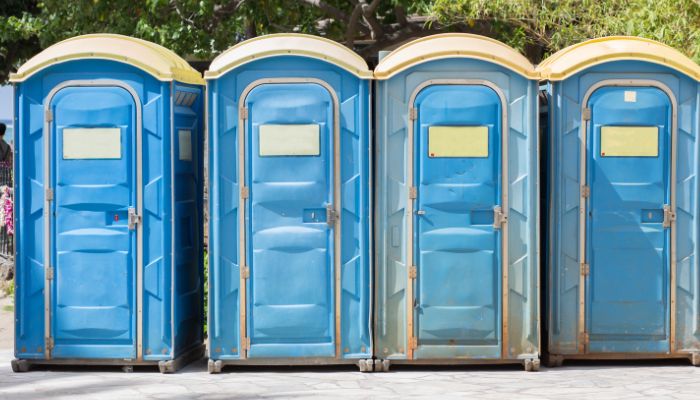
Also, WHO defines safely managed services for sanitation as a proper facility where faecal matter is properly disposed of onsite or offsite and the presence of a facility for washing hands with soap and water. While this may seem a minor concern, most people are deprived of this basic sanitation need, which is also one of the Sustainable Development Goals.
5. Sewage Pollution Is Ignored During Allocation of Finances by Governments and Environmental Philanthropists
Governments and environmental groups largely neglect the issue of sewage pollution as new forms of pollution garner immediate attention and recognition. A study conducted in 2019 found that only US dollars 6 million were allocated for dealing with ocean sewage pollution between 2005 to 2019.
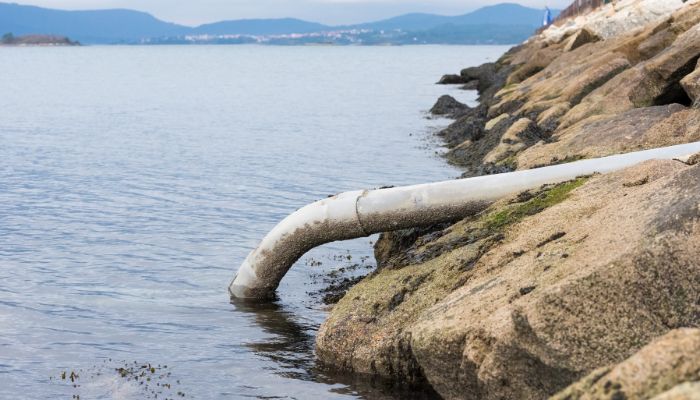
When most philanthropists and marine conservation NGOs talk about the ocean or coastal pollution, they focus on plastic pollution and solid waste management. Most organisations work towards improving public health, reducing the impacts of climate change, alleviating poverty etc. While all the issues mentioned above are crucial, the issue of sewage pollution is an important one and needs equal attention. Hence, significant investments must be made to mitigate this problem.
6. More research on sewage pollution in the ocean needs to be done.
Historically, the problem, causes and impacts of sewage pollution have been understudied. Other pollutants like plastic have received much more attention, and considerable research has been done to mitigate the plastic problem.
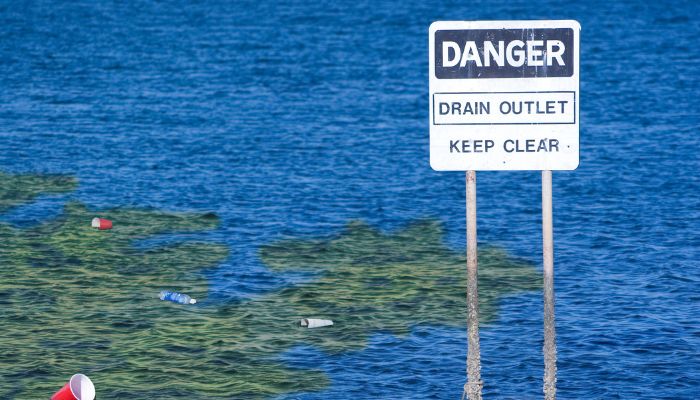
To date, there are very few studies that try to assess the large-scale impact of sewage on the marine environment. Although many studies on individual factors and contaminants like nutrients, metals, microplastics etc., have been published, comprehensive literature on sewage and drainage networks is missing.
Impact of Sewage Pollution
Large volumes of sewage entering the oceans kill marine creatures, destroy underwater habitats, wreak havoc on delicate marine ecosystems and pose significant threats to human health. It also creates many other issues, such as
- The Issue of Eutrophication: Excess nutrients from organic matter reduce the oxygen in the water, which kills marine plants and animals and creates an imbalance in ecological processes, ultimately leading to the creation of dead zones in the oceans. Today, there are about 500 such zones in the world.
- Harmful algal blooms: A nutrient load can lead to the proliferation of algae in the water bodies, which form a greenish layer on the water surface, preventing sunlight and oxygen from reaching the depths. It can also generate toxins or materials like sargassum that harm marine life. In extreme cases, authorities might decide to close coastal areas or beaches. It can also lead to the spread of diseases if people consume contaminated fish or other seafood.
- Cause harm to corals: Sewage might become even more harmful when mixed with toxic metals or other contaminants. It pollutes water and causes damage to coral reefs since they require a clean environment.
- Destruction of coastal mangroves and salt marshes: It also destroys beautiful seagrasses, salt marshes, or even coastal mangroves and creates a foul smell. It increases the level of acidification and the chances of the spread of diseases. The coastal system is badly impacted as sewage interferes with the ability of the mangrove to control erosion or act as buffer zones from storms, tsunamis or breeding grounds for many fish species.
- Spread of diseases: Sewage has many pathogens, viruses, bacteria, worms etc. which, when ingested by livestock, can lead to acute diseases and even kill animals. On the other hand, these pathogens can enter the human body if someone consumes such animal meat.
- Contaminates fisheries and increases fish mortality: If sewage is discharged near fish farms or rivers, it can contaminate the area’s fisheries and increase the fish mortality rate. It can also impact species diversity, as many would migrate to other places because of changes in water composition, toxins, low oxygen levels, etc.
Who is the most affected by sewage pollution?
Sewage pollution is deep-rooted and impacts public health, life quality and coastal regions and economies, primarily the vulnerable and marginalised communities that live in such areas with poor sanitation with nowhere to go.
Sewage harms the environment but also degrades its value as it becomes unfit for tourism or recreation purposes and subsistence. The clean water sources or the local streams used for procuring drinking water might be polluted.
Living in a polluted environment negatively impacts the mental health of such people. It puts a lot of strain, burden and tension on low-income households apart from its more obvious physical impact, which is the spread of diarrheal diseases.
Although people in low to middle-income countries might suffer from such conditions, certain rural communities in wealthy countries also suffer due to a lack of adequate infrastructure and wastewater treatment facilities.
How to tackle sewage pollution?
Sewage Pollution is a serious global concern that is slowly impacting our marine resources. Some experts have suggested the use of green, eco-friendly infrastructure to improve the problem of sewage. In some cities, expansion of the sewage systems is the need of the hour. Countries like Sweden are introducing wetlands, ditches etc., to prevent flooding, which results in sewage and wastewater flowing into the sea.
Another solution is the creation of reed beds. They are a unique solution as they are the perfect place for bacteria and fungi. When sewage passes through these reefs, the microorganisms digest the organic material in the water, and the water flowing from the other side is quite clean. Hence, they act as a natural purification mechanism.
Conclusion
Sewage pollution of our oceans and other water bodies poses several challenges and has myriad impacts, as discussed in the article. Sewage is the single biggest factor causing coastal pollution. A worldwide estimate shows that 104 of 112 coral reefs are impacted by sewage directly or indirectly.
Over 60% of bays in the US Atlantic suffer from seagrass decline, while salt marshes, mangroves, and fisheries are also heavily impacted. Hence, steps need to be taken by both individuals and governments to mitigate this problem for the betterment of society and the environment.
You may also like to read-
- 11 Threats to Marine Environment You Must Know
- What is the Great Blue Hole of Belize?
- 15 Amazing Facts About Coral Reefs
- 8 Ways Cruise Ships Can Cause Marine Pollution
- What is the Pacific Ocean Garbage Patch?
Disclaimer: The authors’ views expressed in this article do not necessarily reflect the views of Marine Insight. Data and charts, if used in the article, have been sourced from available information and have not been authenticated by any statutory authority. The author and Marine Insight do not claim it to be accurate nor accept any responsibility for the same. The views constitute only the opinions and do not constitute any guidelines or recommendations on any course of action to be followed by the reader.
Do you have info to share with us ? Suggest a correction

About Author
Zahra is an alumna of Miranda House, University of Delhi. She is an avid writer, possessing immaculate research and editing skills. Author of several academic papers, she has also worked as a freelance writer, producing many technical, creative and marketing pieces. A true aesthete at heart, she loves books a little more than anything else.
Subscribe To Our Newsletters
By subscribing, you agree to our Privacy Policy and may receive occasional deal communications; you can unsubscribe anytime.




i will copy the text and publish it on my facebook page. you better do the same because it is to much of importance to teach people how awful this behaviour is. Iam a sailor and I do see daily the horrible impact of countries, communities, industries and people leading their sewage into our seas …
thank you